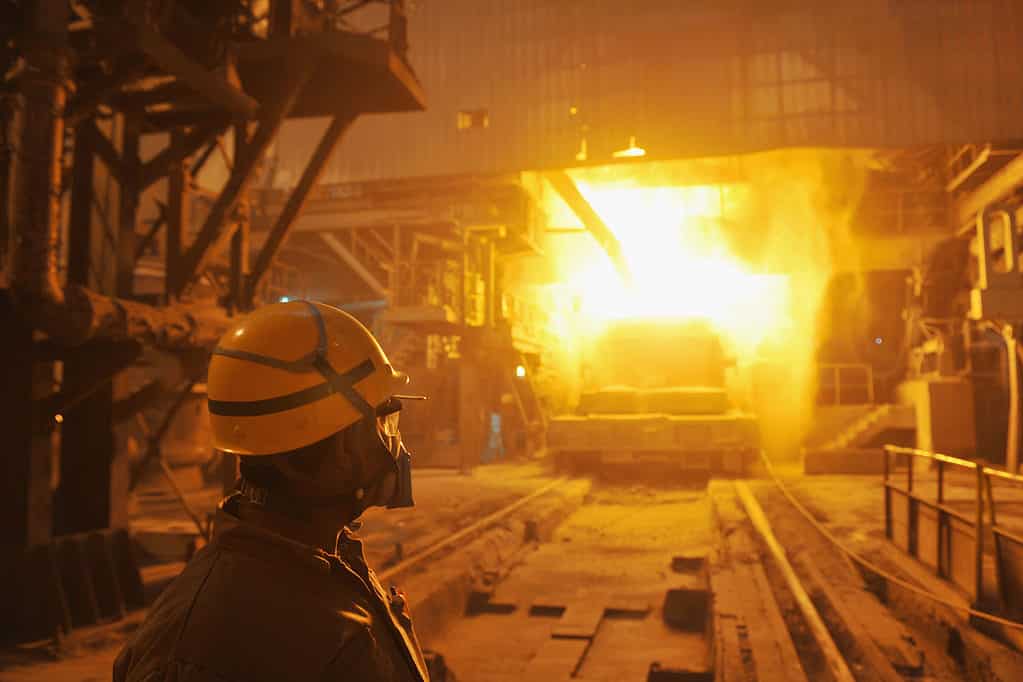
Steel is a material that is central to modern society, be it in the cars we drive, the buildings we work in, the homes in which we live, and countless other facets in between. But making steel comes at a huge cost to the environment, with iron and steelmaking accounting for 9% of the world’s total emissions. With the goal of limiting global warming to 1.5°C, the International Renewable Energy Agency (IRENA) recommends a 90% reduction in CO2 emissions by 2050 — a radical reduction that many see as impossible to achieve. But now, researchers at the University of Birmingham have developed a solution that could achieve this exact target.
A game-changer in steelmaking: “closed loop” carbon recycling
Most people simply cannot fathom how carbon-intensive steelmaking can be. Just imagine this: for every ton of steel produced, a steelmaking plant releases roughly two tons of CO2. You’ve read that right.
This is mainly due to the fact that steelmaking uses coking coal — one of the dirtiest, carbon-rich fuels ever — accounting for 15% of the total global coal consumption.
On an annual basis, the steel industry uses 2 billion tons of iron ore, a billion tons of metallurgical coal, and 575 million tons of recycled steel to produce 1.7 billion tons of crude steel. This means that in a business-as-usual scenario, the steel industry should release 65 billion tons of carbon dioxide into the atmosphere, which is more than 10% of the remaining carbon budget we have to keep global warming in check at 1.5°C, per the Paris Agreement.
One option to meet our climate goals would be to replace all our coal-fired furnaces with natural gas-based direct reduction of iron followed by an electric arc furnace supplied by renewable energy. But by one estimate, such a steelmaking plant costs around $1.5 billion to build. Another option involves natural gas-powered iron ore reduction coupled with carbon capture and sequestration technology, but this is perhaps even more expensive, costing up to $160 per ton of CO2 captured and stored. The price of steel would surge many-fold and given the ubiquity of this material, all of these alternatives sound unfeasible at a global level.
But this is where exciting new research might come in to save the day.
Professor Yulong Ding and Dr. Harriet Kildahl from the University of Birmingham’s School of Chemical Engineering have created a “closed loop” carbon recycling system that could reduce CO2 emissions from the steelmaking industry by nearly 90%. The system utilizes a crystalline mineral lattice known as perovskite to capture CO2 from the top gas of the furnace and reduce it to carbon monoxide (CO).
In addition to reducing emissions, the system could also deliver cost savings of $1.5 billion in 5 years if implemented in the UK alone. Unlike current proposals for decarbonizing the steel sector, which rely on phasing out existing plants and introducing electric arc furnaces powered by renewable energy, the new system can be retrofitted to existing plants.
“An electric arc furnace plant can cost over £1 billion to build, which makes this switch economically unfeasible in the time remaining to meet the Paris Climate Agreement. The system we are proposing can be retrofitted to existing plants, which reduces the risk of stranded assets, and both the reduction in CO2, and the cost savings, are seen immediately,” Professor Ding said in a statement.
The current method of producing iron and steel involves the use of blast furnaces and basic oxygen furnaces, which use metallurgical coke produced from the destructive distillation of coal. This century-old steel manufacturing process is highly carbon-intensive, producing copious amounts of CO2 through reactions between the coke, oxygen, and iron ore.
But by applying this newly proposed method, under a high concentration of CO2, the perovskite splits CO2 into oxygen, which is absorbed into the lattice, and CO, which is fed back into the blast furnace. The perovskite can be regenerated to its original form in a chemical reaction that takes place in a low-oxygen environment. Perovskite was chosen because it is suitable for chemical reactions that take place within a range of temperatures (700-800oC) that can be powered by renewable energy sources and/or generated using heat exchangers connected to the blast furnaces.
The University of Birmingham Enterprise has filed a patent application for the system and is seeking long-term partners to participate in pilot studies so that this technology might be field tested and brought to the industry as soon as possible.
The “closed loop” carbon recycling system offers a promising solution for reducing emissions from the steelmaking industry. With its low cost and low risk, it could be a game-changer in the race to achieve a 90% reduction in CO2 emissions by 2050, while also delivering cost savings.
The findings were reported in the Journal of Cleaner Production.






